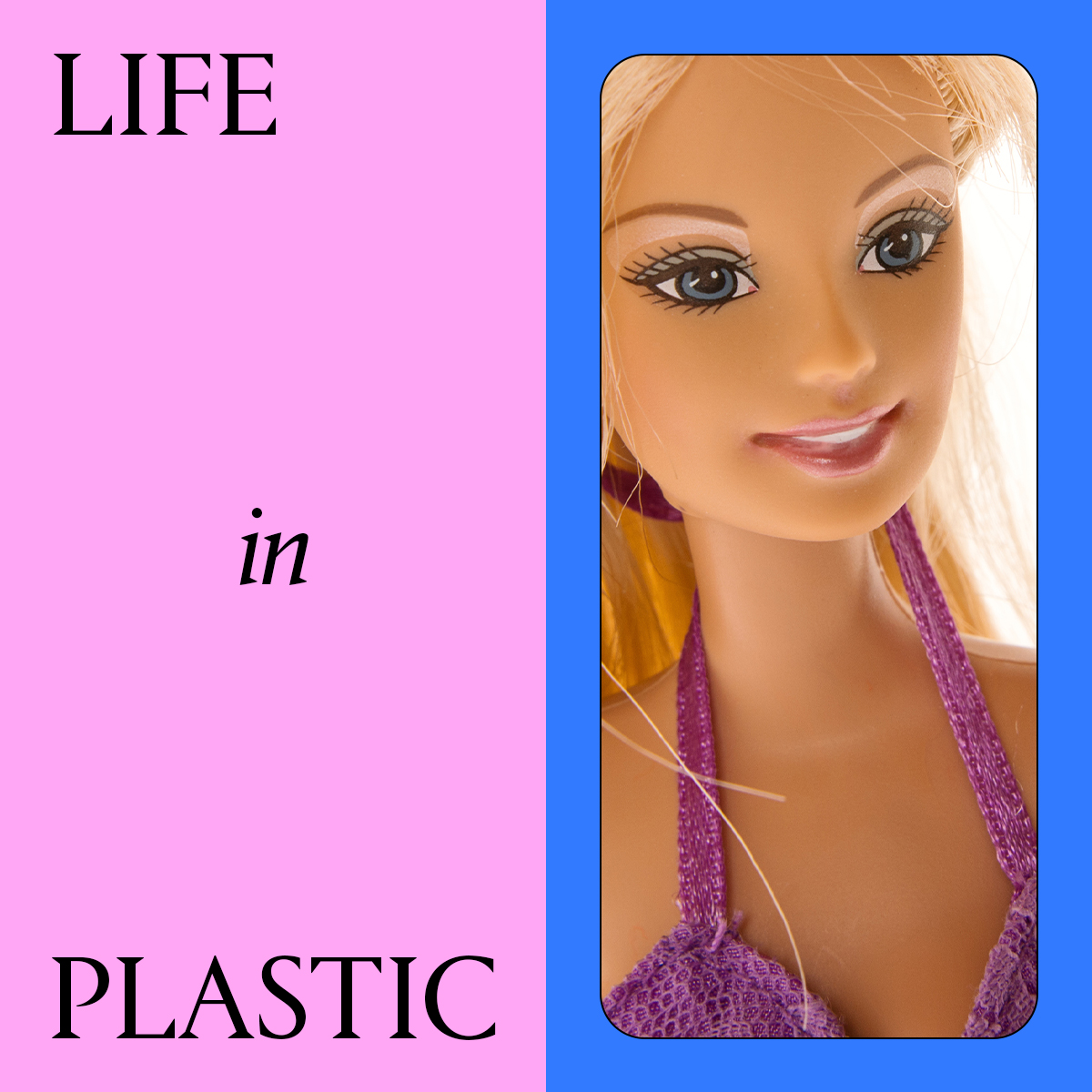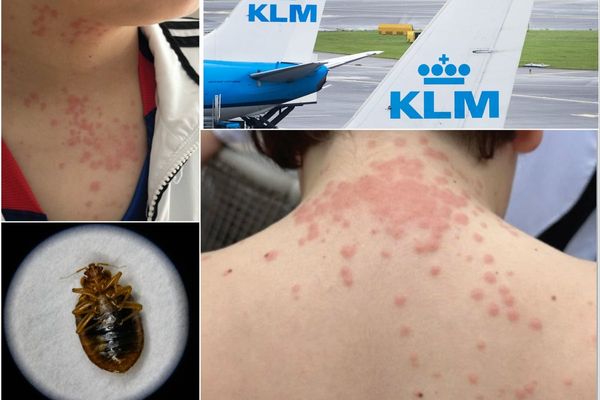
Nothing gets us more excited than talking about a not-so-little tweakment or a nip-tuck procedure. In the spirit of transparency, Marie Claire’s aesthetics column, Life in Plastic, delivers a first-hand peek into what goes on behind the doctor’s door.
Wendy is a 51-year-old woman who was treated with Efudex to treat precancerous skin cancer growths. This is her story, as told to Marie Claire Senior Beauty Editor, Samantha Holender, edited for length and clarity.
I was always so self-conscious about my body. I felt hotter when I was young and tan, 100 percent. I’m not afraid to admit it. But because of that, my sun exposure throughout my life has been horrible. I started with tanning beds when I was a child because my mom told me it would improve my acne. Did it work? Probably not, but it made me look a little better. Then I would go every year from April through May, so I was tan by the time the weather got really nice. If I had a vacation planned for the winter, I’d go again. We didn’t know how bad tanning beds were for us.
But that was just the pre-season tan. When it was summer on the Jersey Shore, my only mission was to fry my skin. I would get together with all my friends and bake on the beach for hours. I would use a little sunscreen, but not nearly enough. SPFs weren’t nice like they are today; they were thick and goopy and greasy. But let me tell you: I wish I sucked it up and used the whole freaking bottle.
By the time I reached my late 30s and early 40s, I could barely spend time in the sun without being in actual pain. My body, especially my chest, started to get covered in sun spots and discoloration, like red polka dots. It was bumpy and crusty, almost like sandpaper. Essentially, it was gross. They used to go away during the off-season, but over the past few years (I’m 51 now), they’ve become more of a permanent fixture. I can also feel the heat on my chest when it's hot outside. The overexposure has made my skin sensitive to the sun that it almost makes me think I’m burning the second I step outside. And I wear a lot of sunscreen now.
It was around this time that I started going for regular body checks. Needless to say, I was not an easy patient. My dermatologist was sending spots for biopsy almost every year. She was using cryoablation—which is basically like a cold zap—to remove pre-cancerous spots regularly. “We call these spots pre-cancerous growths, which are not cancer, they are the stage before skin cancer,” explains board-certified dermatologist Nava Greenfield, MD at Schweiger Dermatology in New York City. “These pre-cancer cells have not reached the first layer of skin, but they often need to be biopsied.”
It got to the point where I was getting so many red, scaly spots on my chest that biopsies and cryoablation became unsustainable—and frankly just annoying. But no part of me wanted to develop skin cancer, so I finally asked about more aggressive treatment options.
The Consultation
My doctor suggested addressing the whole area at once with something called Efudex, which, as explained to me, would make most of the pre-cancerous cells hiding underneath the surface layer of the skin rise to the top. “Efudex is the brand name for topical 5-Fluorouracil, which is a topical chemotherapy treatment most commonly used to treat precancerous lesions to help reduce someone’s risk of developing skin cancer,” says board-certified dermatologist Robert Finney, MD, at Soho Skin and Laser. “An easy way to describe how it works is by selectively targeting and killing the rapidly dividing cells from precancerous and cancerous growths.” It’s most common use is to target precancerous growths called actinic keratoses—roughly one in 20 actinic keratoses will march on to form squamous cell carcinoma, a common type of skin cancer, he explains. “Efudex can bring underlying sun damage in the dermis to the surface and then treat it [by stoping the pre-cancerous cells from developing]. In doing so, it can help prevent precancerous spots from becoming cancerous,” explains board-certified dermatologist Marisa Garshick, MD.
I had never heard of it before, and it certainly didn’t sound pleasant, but I had to do something. My doctor called in the Efudex prescription, which I would apply once a day. She told me not to worry if my chest started to look angry (it did) and told me we would check back in at the end of the month.
The Treatment
The cream didn’t feel like anything when I first put it on my skin. I used a thin layer, from the top of my chest to the top of my boobs, every night. I guess you could do it in the morning instead, but night just felt better for me. At first, nothing really happened and it stayed like that for about a week and a half. That’s when it took a turn.
My chest started to get red and the pre-cancerous spots were rising. It hurt like a b–tch—imagine a combination of a sunburn and an actual burn. A really, really, bad burn. I slept with Aquaphor coated over my entire chest and surrounding areas every night because it felt so dry and tight. “It can be associated with redness, irritation, scabbing, and ulceration, which can increase the risk of infection, but the main side effects relate to skin redness, dryness, and irritation,” explains Dr. Garshick.

It was probably the worst around the three-week mark. My chest looked fire-engine red and almost purple in parts. It got to the point where I almost didn’t think I could use any more because it hurt so badly, but the spots really started to rise up to the upper layer of my skin (the epidermis). I could literally see and feel it working. It’s like a laser that brings everything to the surface—wherever the damage is, it just lights right up.
I could only wear high-neck tops (it’s really scary looking) and some days I just felt more comfortable staying at home all day. On days when it was extra bad, I would take some Tylenol or apply a prescription hydrocortisone cream, but it was more uncomfortable than painful. Eventually, the purple dots began to slough off and it became more of a light red color. That final jump lasted another week.
The Results
By six weeks, almost all of the pre-cancerous, crusty-looking spots had flaked off and my skin tone started to return to its normal shade. My doctor was really pleased with the results, too. Now, it looks so much smoother, and it feels so much smoother. It doesn’t have a rough or bumpy texture anymore. I’m six months out from the treatment and I haven’t gotten any of the little crusties back, which is great. It’s ugly still—it’s certainly unattractive—because that visible sun damage I’ve accumulated through the years doesn’t go anywhere. I still have sun spots and hyperpigmentation. You can still see white spots where I’ve had spots frozen off. But overall, the rough texture is gone, and I much prefer the Efudex treatment to the cryoablation because while it really sucks for a month, I then know I’m good to go for at least a few years.
I’ll likely have to do Efudex on my face pretty soon, too. It’s a lot—six weeks of having those marks on my chest take over my face is not something I’m looking forward to. Currently, the red, scaly marks come and go with the summer season, but once they become more permanent, I’ll just have to bite the bullet. The difference is that I can cover my chest for the six weeks of the Efudex treatment. With my face—well, unless I’m wearing monster sunglasses and a head scarf for a month and a half—it’s a little more difficult.
My Takeaway
It’s ironic, really. I was always tanning because I was self-conscious. That was always my struggle. And in the process, it really just made me self-conscious about another part of my body. But I take peace in knowing I’m doing what I can to keep myself healthy and safe. The Efudex treatment isn’t foolproof—I still go for yearly skin checks to see if anything looks suspicious—but it has made a huge difference in terms of my overall skin health. I haven’t had to get any biopsies or have anything frozen off since.
If I could get in a time machine, you’d catch me in a thick, goopy sunscreen hiding under an umbrella. But since that’s impossible, I hope my story encourages everyone else to do just that.

Why Trust Marie Claire
For more than 30 years, Marie Claire has been an internationally recognized destination for news, fashion and beauty trends, investigative packages, and more. When it comes to the products Marie Claire recommends, we take your faith in us seriously. Every product that we feature comes personally recommended by a Marie Claire writer or editor, or by an expert we’ve spoken to firsthand.







